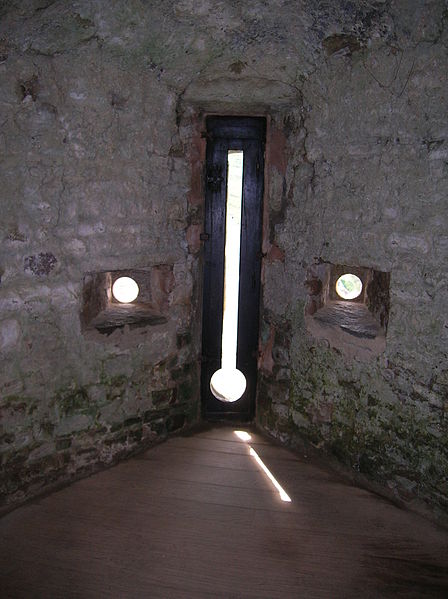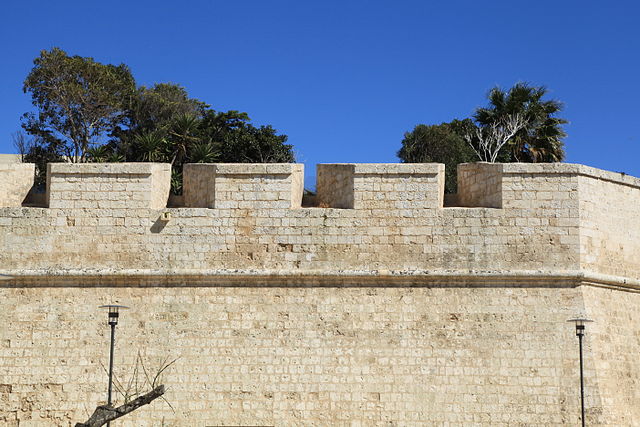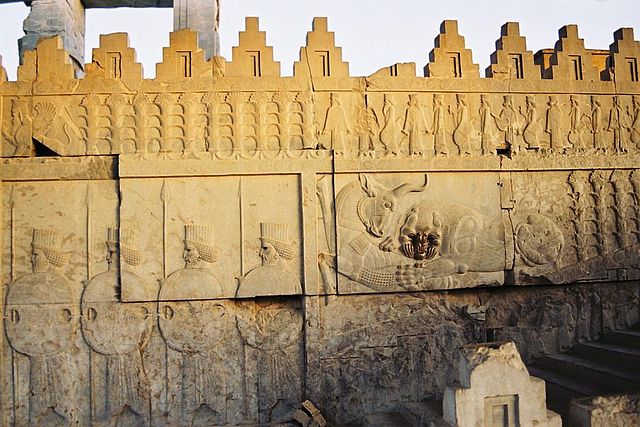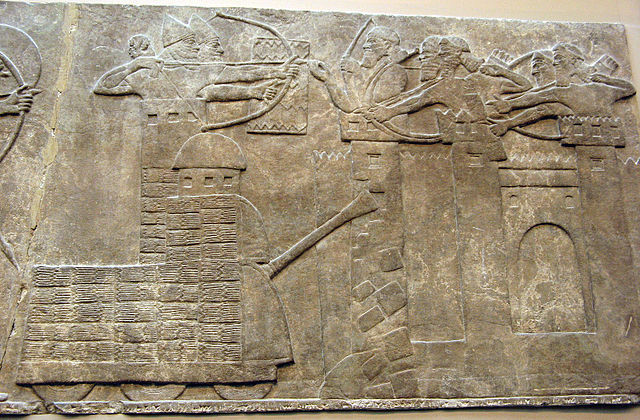An embrasure is the opening in a battlement between two raised solid portions (merlons). Alternatively, an embrasure can be a space hollowed out throughout the thickness of a wall by the establishment of a bay. This term designates the internal part of this space, relative to the closing device, door or window. In fortification this refers to the outward splay of a window or of an arrowslit on the inside.
Embrasure with 3 angles of fire, Keoti Fort, India
A loophole or inverted keyhole embrasure, allowing both arrow fire (through the arrowslit at the top) and small cannon fire through the circular openings, Fort-la-Latte, France
Embrasure of Chinese wall
Embrasures at Mdina, Malta
A battlement, in defensive architecture, such as that of city walls or castles, comprises a parapet, in which gaps or indentations, which are often rectangular, occur at intervals to allow for the launch of arrows or other projectiles from within the defences. These gaps are termed embrasures, also known as crenels or crenelles, and a wall or building with them is described as crenellated; alternative older terms are castellated and embattled. The act of adding crenels to a previously unbroken parapet is termed crenellation.
Battlements on the Great Wall of China
Decorative battlements in Persepolis
Drawing of battlements on a tower
9th-century BC relief of an Assyrian attack on a walled town with zig-zag shaped battlements








